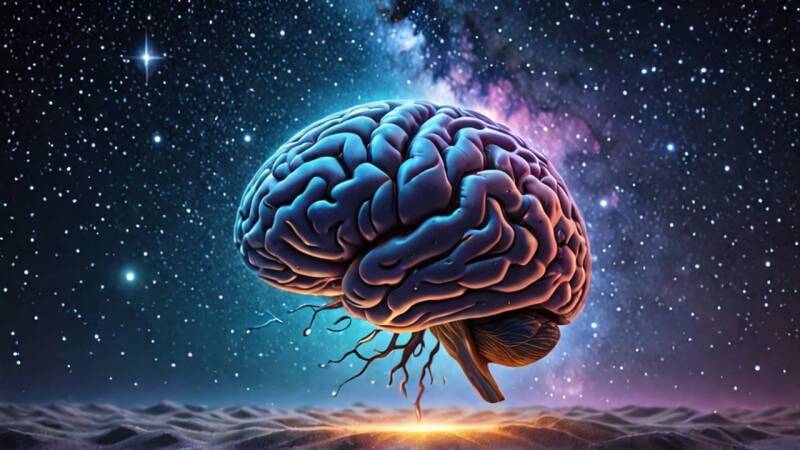
Letting Go: The Clinical Power of Emotional Release and Neurological Integration
In the field of holistic health, few works have bridged the realms of psychology, neurology, and spiritual awareness as profoundly as Dr. David R. Hawkins’ Letting Go: The Pathway of Surrender.
Hawkins, a psychiatrist and consciousness researcher, distilled a lifetime of clinical insight into one principle that transcends all methods of healing: the capacity to release rather than resist.
At its core, Letting Go offers not another technique, but a fundamental shift in understanding human physiology, emotion, and consciousness. It reveals that the body’s biochemistry, neurological function, and even its disease patterns are deeply influenced by the energetic weight of unprocessed emotions.
The Physiology of Holding On
Clinically, we understand that every emotion corresponds to measurable biochemical and neurological activity. Fear activates the sympathetic nervous system, flooding the body with cortisol and adrenaline. Anger constricts blood vessels, heightens muscular tension, and shifts autonomic control. Grief dampens immune function.
When emotions are chronically suppressed or resisted, they do not disappear—they become embedded within the nervous system, connective tissue, and cellular memory. The energy of these emotions creates distortion within the body’s communication network, interfering with the seamless coordination between brain and body.
This is where Dr. Hawkins’ work intersects beautifully with the Neurological Integration System. (🧠NIS). Both recognize that the human organism is self-healing when neurological signaling is clear and emotional interference is released.
The Pathway of Surrender: How Letting Go Works
Dr. Hawkins’ method is profoundly simple yet neurologically transformative. It begins with awareness—fully allowing an emotion to exist in consciousness without resistance, judgment, or suppression. Instead of intellectualizing or repressing, the individual experiences the raw energy of the feeling until it naturally dissolves.
This process of surrender disarms the stress response and restores flow within the autonomic and limbic systems. It removes interference patterns that disrupt homeostasis and shifts the entire system toward coherence.
In clinical terms, “letting go” rebalances the brain’s inhibitory and excitatory systems, restores vagal tone, and enhances cellular communication throughout the fascia, glands, and organs. The result is often a spontaneous release of symptoms previously anchored by emotional charge.
Emotional Energy and the Hierarchy of Consciousness
Dr. Hawkins also mapped a scale of human consciousness, identifying emotional states as measurable fields of energy that directly impact physical health.
At the lower end of this scale lie shame, guilt, apathy, fear, and anger—frequencies that constrict life energy, disrupt neuroendocrine function, and perpetuate disease.
At higher frequencies—courage, acceptance, love, and peace—the human system operates in harmony with its innate intelligence.
Each upward movement on this scale corresponds to measurable physiological improvement:
Cortisol levels normalize.
Oxygen uptake increases.
Heart-rate variability stabilizes.
Immune competence strengthens.
Clinically, these shifts mirror what occurs when the neurological circuitry of the organism is reintegrated—a central principle of NIS. The brain no longer interprets internal stimuli as threat, allowing every system to function under parasympathetic dominance, where true healing unfolds.
Letting Go as Neurological Realignment
From an integrative clinical perspective, Letting Go is not simply an emotional exercise—it is a neurological recalibration.
When the mind releases resistance, the limbic system communicates safety to the hypothalamus, which in turn regulates hormonal, immune, and autonomic balance. The very act of surrender activates the brain’s healing networks, allowing energy to flow unobstructed through the body’s tensegrity matrix.
This process explains why patients who engage in emotional surrender frequently report improvements not only in mood but in pain levels, digestion, sleep, and cardiovascular stability. The body heals because the brain is no longer defending against its own internal environment.
The Clinical Intersection: Letting Go and NIS
The Neurological Integration System has consistently demonstrated that when the brain is given accurate feedback, it can correct dysfunction at the speed of light.
Hawkins’ work parallels this discovery—when emotional charge is released, the neurological pathways responsible for control and regulation are instantly freed.
Both systems—Hawkins’ Pathway of Surrender and NIS—are built on the same foundational truth:
"The body is not the problem. It is the messenger."
When we let go of the emotional tension encoded within the system, the message is received, the correction is made, and the organism returns to its natural state of balance and vitality.
The Science of Freedom
Modern research continues to affirm Hawkins’ findings. Studies in psychoneuroimmunology and heart-brain coherence show that acceptance and surrender activate the parasympathetic nervous system, reduce inflammatory cytokines, and increase alpha brainwave activity associated with calm and creativity.
These discoveries confirm what holistic practitioners have long known:
The highest form of healing arises not from doing more, but from allowing more.
Letting go is not weakness—it is the release of resistance that restores life to flow.
Conclusion: Returning to Wholeness
Letting Go offers a direct pathway back to the integrated self—a state where mind, emotion, and physiology function as one harmonious system. It reminds us that healing is not about control, but about communication—between the conscious and unconscious mind, the brain and body, the physical and the spiritual.
When we surrender what no longer serves—anger, fear, guilt, or control—the brain’s regulatory intelligence resumes command. This is the moment when homeostasis returns, symptoms fade, and peace replaces struggle.
As both Dr. Hawkins and clinical experience affirm, the pathway of surrender is not only emotional—it is biological.
"It is the neurological art of allowing life to heal itself."
